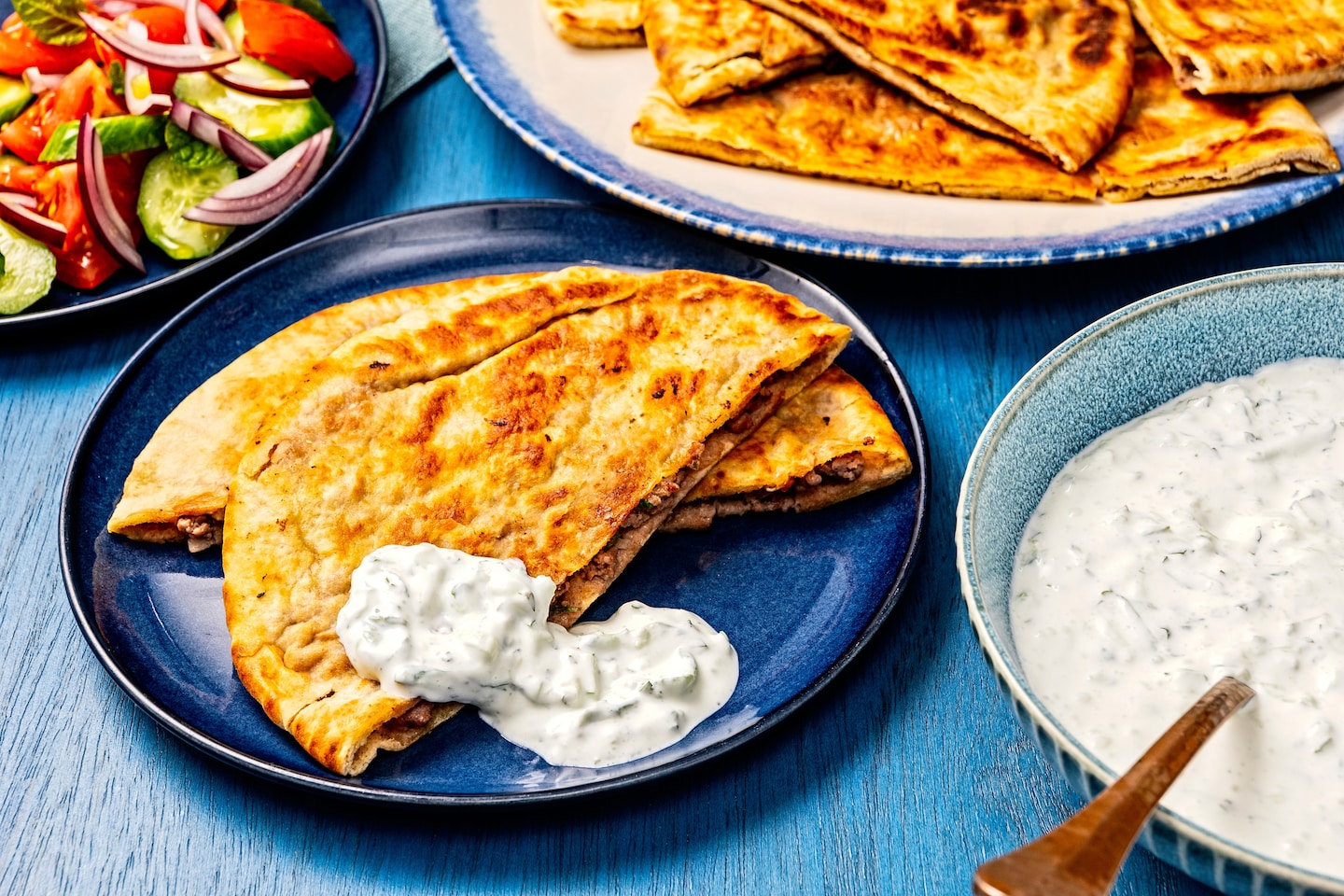Around the age of 3, my world was made up of simple words and basic desires. Imagine my confusion, when my grandmother, whose hands were usually the architects of culinary wonders, offered me arooset labaneh, or a “bride of labaneh,” for supper one day.
Until then, I had understood that brides were found at weddings and labneh in kitchens; yet here were these disparate worlds suddenly in a sublime culinary union.
Get the recipe: Arayes With Cucumber Labneh
In Arabic, the word “aroos” means bride — a symbol of something beautiful and desirable. As I learned early on in life, the culinary world of the Levant draws on this poetic imagery to describe foods. Across Palestinian, Syrian, Lebanese and Jordanian towns, a simple rolled-up sandwich made with shrak (a very thin unleavened pita bread) spread with labaneh is lovingly referred to as arooset labaneh, or a “bride of labaneh.” It’s a dish loved for its simplicity as much as its flavor.
Where this naming tradition originated may remain a mystery, but its widespread popularity across the Levant speaks volumes about the dish’s cherished place in our kitchens.
“Arayes” is the plural form of “aroos,” a Levantine delicacy made of pita bread spread with a thin layer of spiced meat and grilled. Also known as arayes lahmeh (brides of meat) or arayes kafta (brides of kafta), these stuffed pitas are cherished not only for their balanced blend of spices, textures and flavors, but also for their ease of preparation.
The filling is usually ground lamb or beef or a combination, mixed with spices and very finely diced – or coarsely shredded – onions and tomatoes. Some choose to add green chiles and parsley as well, others choose garlic or red bell pepper. The point is to make the meat more spreadable so you can get a thin layer into the bread that will cook by the time the outside has crisped up, which happens fairly quickly.
Every family nowadays has their own way of making this dish. Some will add a slice of cheese, others will opt for spicing reminiscent of sujuk (heavy on the garlic, cumin, paprika and fenugreek) instead of the more traditional kafta spices. While nontraditional, some people opt for a vegetarian alternative of a mix of vegetables, such as minced potatoes, mushrooms, cauliflower, red bell pepper and onions.
But if at the end of the day arayes are pitas of beauty, and beauty is in the eye of the beholder, then shouldn’t anything we choose to please our palates work?
Whatever filling you choose, an equally important decision is the choice of bread because striking the right balance is key: A pita that is too-thin risks scorching before the meat within is fully cooked, while one that is overly thick skews the meat-to-bread ratio. Nowadays, it’s easy to find Middle Eastern pita in grocery stores and it comes in both white and whole-wheat varieties (make sure it’s the Middle Eastern variety not the Greek, which tends to be much thicker and often without a pocket). In a pinch, a thick flour tortilla, folded in half, will also do. If the pitas you find are small, that’s fine, simply use more, and if they are large you can slice them in half and, after cooking, quarter them.
The beauty of this dish lies not only in the versatility of its myriad possible ingredients, but also in the methods of cooking. Traditionalists might opt for a charcoal grill, but modern conveniences like the panini press have turned arayes into an effortless midweek meal. Brushed with olive oil, the pita needs just a few minutes for the meat to cook and the bread to crisp.
If you don’t have a panini press, you can easily accomplish this in a skillet, simply brush the pita exterior with olive oil and press down on it with a wide spatula until crisp on each side.
And, of course, the traditional grilling method still works, but consider indirect heat so the arayes can crisp and cook without burning.
Once done, arayes are delicious on their own, but are commonly served with simple sides such as yogurt, labaneh or creamy hummus, as well as tangy pickles and either sliced vegetables or a salad of cucumbers, tomatoes and mint.
The acidity and freshness of the sides cut through the richness of the meat, creating a dish that carries within it not just perfectly balanced flavors, but a history of tradition, communal values, and the undeniable allure of simplicity done right.
Get the recipe: Arayes With Cucumber Labneh
